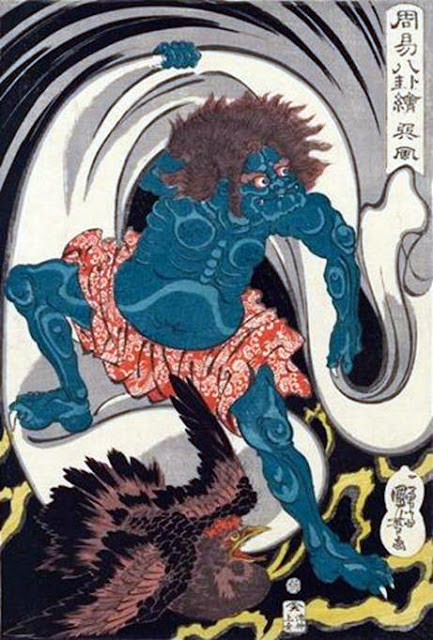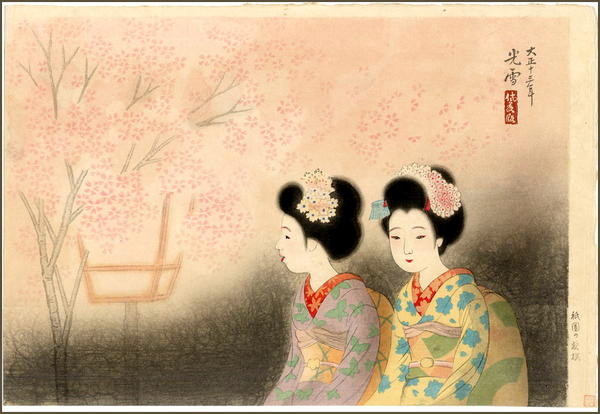 |
| Shunzan: Hotei God on a Boat Catching Shojo Goblins with a Sake Cup |
Hotei is one of the Shichi fukujin, "Seven Gods of Luck", a common motive in Japanese art. He carries a bag, Nunobukuro [布袋], which is never empty, and from which he feeds the needy. The origin of Hotei is a real person, the Chinese Buddhist monk Budaishi. He is considered an incarnation of Matreiya, or in Japanese: Miroku Bodhisattva. Budaishi died in 917 AD.
This print from the 1780s by Katsukawa Shunzan (active 1782-1798) shows Hotei God on a Boat Catching Shojo Goblins with a Sake Cup.





